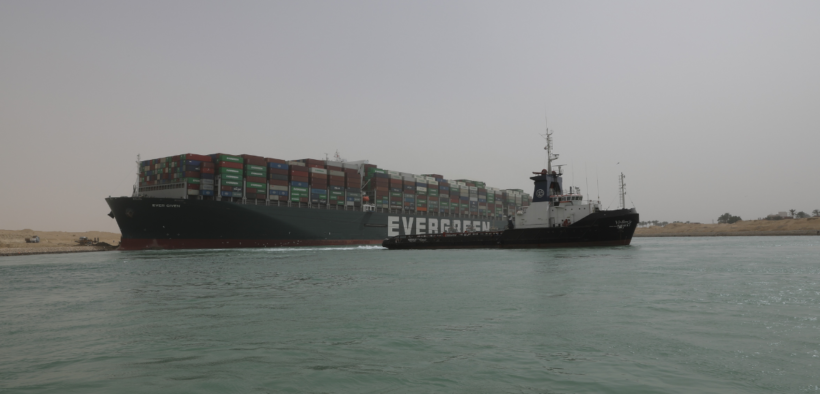Suez Canal crisis over, but impact across supply chains may last months
Share

The mammoth Ever Given container ship has finally been freed from the Suez Canal, but concern has shifted to its secondary effects on countries, companies and industries across the globe. In particular, international trade and global supply chains are looking to be in for a bumpy ride in the following weeks.
Ever Given, one of the world’s largest container vessels, ran aground and was lodged across the southern edge of the Suez Canal on Tuesday, 23 March. The blockage lasted for six days before the 400-metre-long ship was successfully refloated on Monday after continuous efforts by salvage crews.
With about 13% of global trade passing through the waterway, the blockage’s ripple effect across the trade industry is estimated to be significant. According to German financial services provider Allianz, each passing day of immobilisation could cost global trade between US$6 billion to US$10 billion.
While the massive traffic backlog has already been cleared, experts are forecasting continued ramifications for global supply chains for a period of what could possibly be months.
Most Affected Regions
A report by data and analytics experts from Dun & Bradstreet and E2open (a supply chain software company) studied the impact of the blockage on businesses across the world.
Basing their findings on annual shipping data that tracks the vessels and materials found onboard ships travelling through the Suez Canal, the team found that Europe will feel most of the second round of consequences from the crisis.
They continued that businesses in Asia will also be impacted in two main ways: by the delay of shipments from Europe; and by a shortage of empty containers returning to their region, which will further stall their abilities to deliver goods globally.
In the U.S, it was revealed that the top industries that will be most impacted by the crisis are grocery stores, department stores, auto and home supply stores, hardware stores, surgical and medical equipment suppliers, plumbing heating and air-conditioning, semi-conductors, general warehousing and storage, trucking and sporting goods.
The Fragility of Global Supply Chains
Still reeling from the COVID-19 pandemic, the Suez Canal crisis is yet another reminder of the fragility of global supply chains. Shortages for particular products will be happening soon, due to delays in ports or shortage of materials or key components.
“Companies have developed a higher level of dependency on suppliers and third parties from other countries, and that dependency is highlighted when a link in the supply chain is impacted,” said Brian Alster, Third-Party Risk & Compliance General Manager of Dun & Bradstreet
“The Suez Canal incident is another reason for businesses to invest in data and technology to create an agile, geographically dispersed supply chain that can quickly pivot during unexpected events,” he said.
In line with this, the crisis might also be taken as another opportunity for businesses to reshape their supply chains, especially for manufacturers who might consider being less dependent on sources that are distant and reliant on container shipping.
Takeaways and Best Practices
The Suez Canal incident has highlighted the need for better visibility and risk-assessment in global supply chains. In their analysis, Dun & Bradstreet and E2open provide a couple of both near-term and long term best practices to consider in understanding and managing supply chains.
The companies said that a near-term best practice is to completely and immediately assess your suppliers and suppliers’ suppliers to determine the impact to your own supply chain operation. Another vital step is to identify your alternative suppliers in non-impacted regions of the world and engage them to offset the delays of suppliers in the impacted region.
For longer-term best practices, companies must strategise through developing a risk-based assessment process that monitors what could impact supply chain productivity and supports a flexible and agile network, even in the face of unexpected events.
Meanwhile, monitoring your supply chain must also include the risks associated with both Tier 1 and Tier 2 suppliers for a complete view.
In the same vein, companies must start investing in technology to ensure greater transparency and visibility into their entire supplier network, which as established by the Suez Canal crisis, is necessary at this point.
Source: Dun & Bradstreet and E2open















